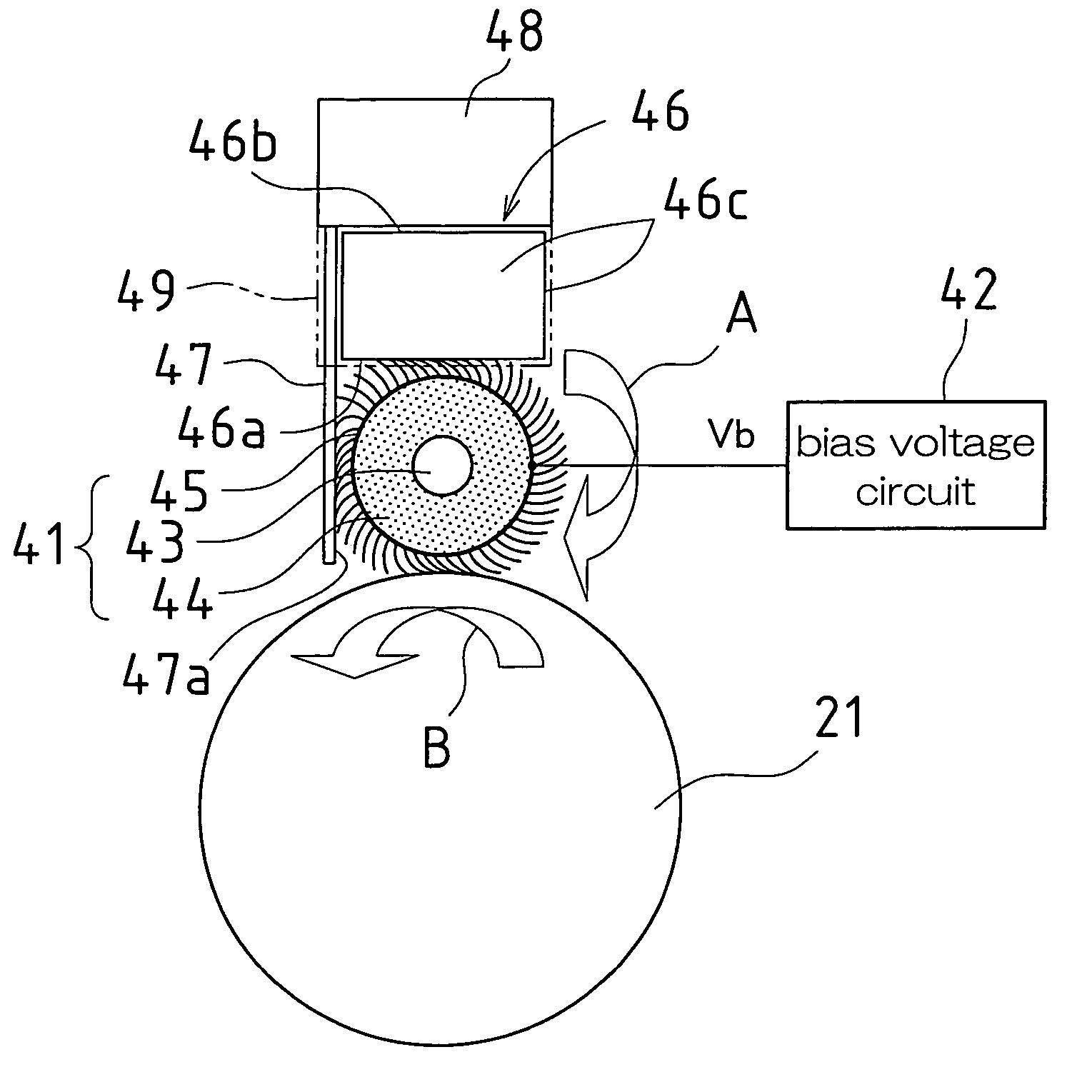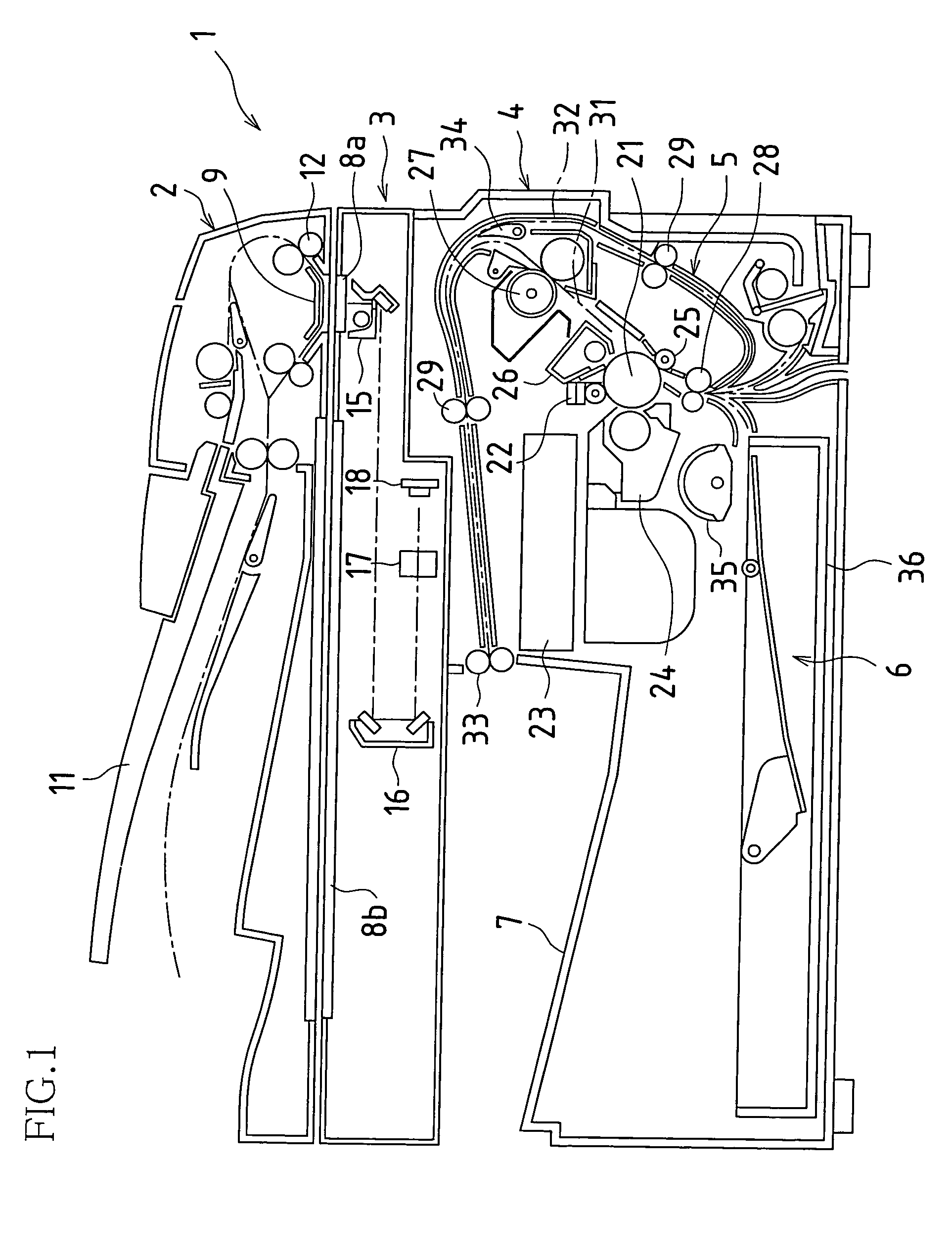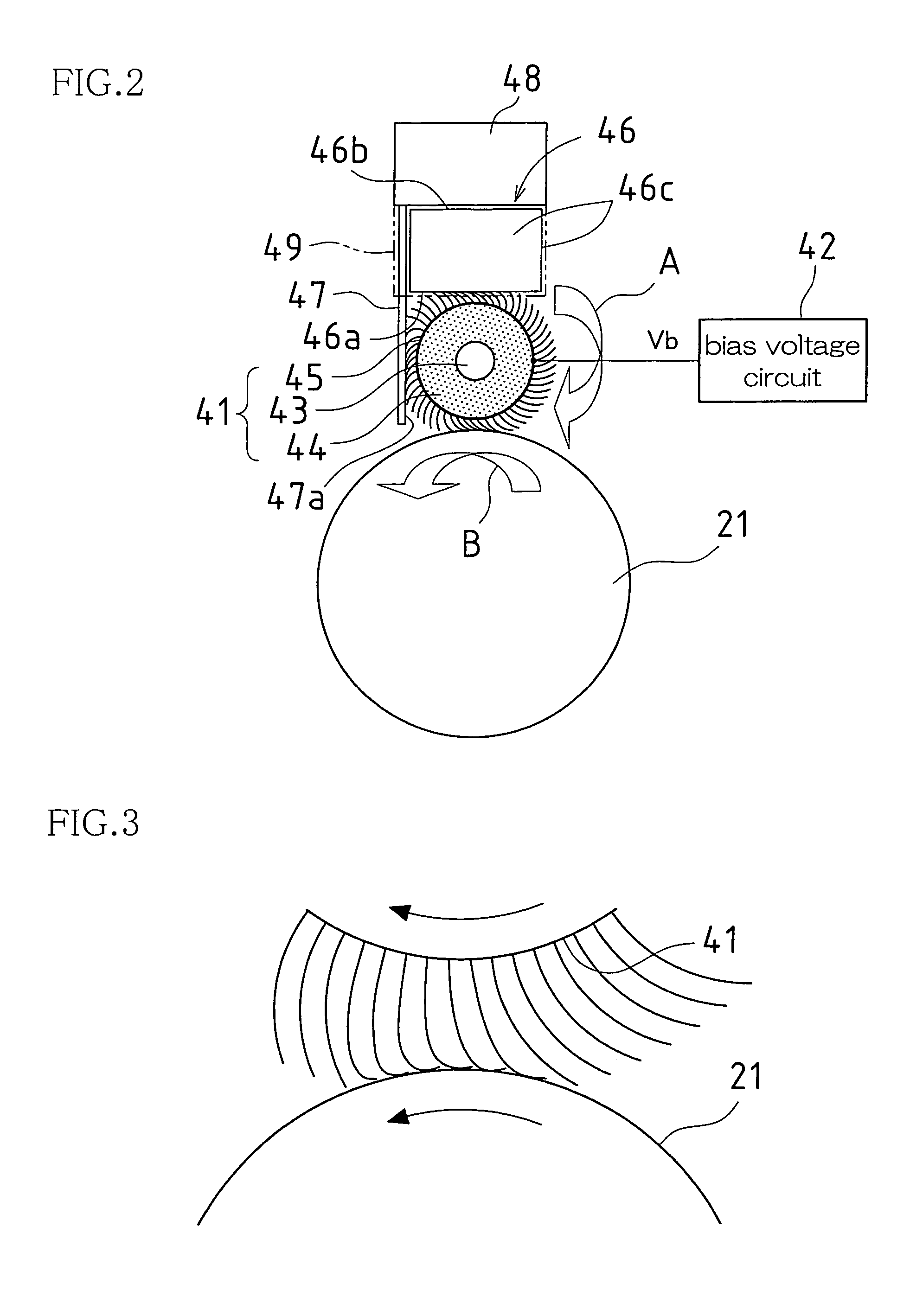Cleaning apparatus for a rotatable member
a cleaning apparatus and rotatable technology, applied in electrographic process apparatus, instruments, corona discharge, etc., can solve the problems of large amount of ozone, degrade image quality, and fouling the brush, and achieve the effect of increasing the efficiency of removal of fouling materials
- Summary
- Abstract
- Description
- Claims
- Application Information
AI Technical Summary
Benefits of technology
Problems solved by technology
Method used
Image
Examples
embodiment 1
[0053]FIG. 1 is a side view showing an image forming apparatus to which the present invention is applied. This image forming apparatus 1 is provided with an original carrying unit 2, an original reading apparatus 3, a printing unit 4, a recording paper carrying unit 5, a paper-supply unit 6 and a paper-discharge tray 7.
[0054]In the original carrying unit. 2, when at least one original is loaded into an original loading tray 11, the originals are picked up and carried one sheet at a time from the original loading tray 11, and when the leading edge of an original reaches PS rollers 12, the carrying of the original is temporarily halted with the leading edge of the original brought parallel to the PS rollers 12. Then, after reaching synchronization with the image recording operation of the printing unit 4, a clutch between the PS rollers 12 and a driveshaft is engaged, driving the PS rollers 12 to rotate so that the original is again carried by the PS rollers 12 and the original is pas...
embodiment 2
[0108]FIG. 10 is a schematic side view showing an image forming apparatus according to Embodiment 2 of the present invention. This image forming apparatus is used to form color images, being provided with four visible image forming units 60Y, 60M, 60C and 60B, and a transfer-fixing roller 61.
[0109]In each of the visible image forming units 60Y, 60M, 60C and 60B, a brush-based charging apparatus 22, a laser scan unit 63, a developing unit 64, a transfer roller 65 and a cleaner 66 are disposed around a photosensitive drum 62. The developing unit 64 of each of the visible image forming units 60Y, 60M, 60C and 60B contains toner of one of the colors yellow (Y), magenta (M), cyan (C) and black (B). Moreover, in the visible image forming units 60Y, 60M, 60C and 60B, once a uniform charge is applied to the surface of the photosensitive drum 62 by the brush-based charging apparatus 22, the laser beam of the laser scan unit 63 is modulated depending on the image information-while the laser b...
PUM
 Login to View More
Login to View More Abstract
Description
Claims
Application Information
 Login to View More
Login to View More - R&D
- Intellectual Property
- Life Sciences
- Materials
- Tech Scout
- Unparalleled Data Quality
- Higher Quality Content
- 60% Fewer Hallucinations
Browse by: Latest US Patents, China's latest patents, Technical Efficacy Thesaurus, Application Domain, Technology Topic, Popular Technical Reports.
© 2025 PatSnap. All rights reserved.Legal|Privacy policy|Modern Slavery Act Transparency Statement|Sitemap|About US| Contact US: help@patsnap.com



